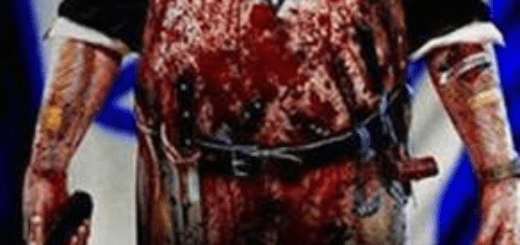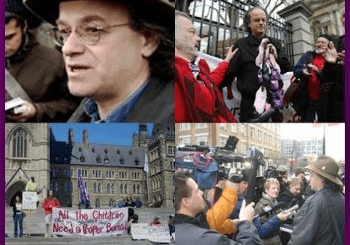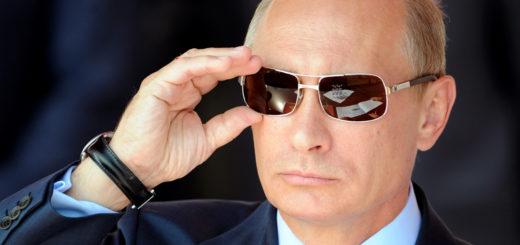U.S. Gov Gives Pejorative Label to Dissidents: Calls Them Communists to Justify MASS MURDER! After U.S. Mass Murder & Mass Starvation N. Koreans VOW They WILL Survive!
The Unknown Truth About Korea

This photograph by the U.S. Army, provided by the U.S. National Archives in College Park, Md., on Monday, May 5, 2008, is one of a series of declassified images depicting the summary execution of South Korean political prisoners by the South Korean military and police at Daejeon, South Korea, over several days in July 1950. The Truth and Reconciliation Commission of Korea is investigating this and similar mass killings in South Korea in 1950-51. A chief investigator estimates up to 7,000 were killed at Daejeon, and tens of thousands elsewhere. (AP Photo/National Archives, U.S. Army)
[Editor’s note: As Trump continues to ratchet up the tensions with North Korea, it is worth reminding ourselves of why the North Koreans are so scared of the US and why they have such a burning hatred for the Americans and their South Korean collaborators. Hundreds of thousands of Koreans were slaughtered by the brutal and cruel Nationalist regime that the US installed in Seoul after the Japanese occupation ended post WW2, millions more were killed, wounded or made homeless in the four years of war from 1950 to 54 that pitted the North against South, backed by the Soviet Union and United Nations respectively. That war has never officially ended, there is no peace treaty, just an uneasy ceasefire standoff.
According to estimates by South Korea’s Truth Commission, up to 100,000 unarmed South Korean civilians became victims of massacres committed during the Korean War (1950-1953) by the South Korean armed forces and police. Most of the estimated 1,222 massacres took place during the first few months of the war.
During the war, more massacres occurred. The US occupation forces had issued stay-put orders to the civilian population of South Korea which sought to flee combat zones, however, as the front approached. Because US generals thought that it was impossible to differentiate between fleeing South Korean civilians and Leftists in civilian clothes infiltrating the territory still held by the American occupation regime, all Koreans became targets. Korean civilians usual wore the customary traditional white clothes of the common people. They were easily spotted by reconnaissance planes. Columns of refugees were strafed by US planes and shot at by the infantry, driving up the number of those massacred. Death had many faces, however, starvation being not the least of the causes that decimated the population of the country to an extent that made Paul Robeson and others speak of genocide.
Ian]
_________
Brian S. Wilson
The Unknown Truth About Korea: U.S. Sanctioned Death Squads and War Crimes, 1945-1953
January 1, 2000
The mostly unknown record of the brutal U.S. occupation and subsequent control of Korea following the Japanese defeat in August 1945, and the voluminous number of war crimes committed between 1950 and 1953, have been systematically hidden under mountains of accusations directed almost solely against the “red menace” of northern Korea. The Korean War itself grew out of U.S. refusal to allow a genuine self-determination process to take root.
The Korean people were exuberant in August 1945 with their new freedom after being subjected to a brutal 40-year Japanese occupation of their historically undivided Peninsula. They immediately began creating local democratic peoples’ committees the day after Japan announced on August 14 its intentions to surrender. By August 28, all Korean provinces had created local peoples’ offices and on September 6 delegates from throughout the Peninsula gathered in Seoul, at which time they created the Korean People’s Republic (KPR).

Korean Volunteers who fought against the Japanese occupation
The United States had a different plan for Korea. At the February 1945 Yalta conference, President Roosevelt suggested to Stalin, without consulting the Koreans, that Korea should be placed under joint trusteeship following the war before being granted her independence. On August 11, two days after the second atomic bomb was dropped assuring Japan’s imminent surrender, and three days after Russian forces entered Manchuria and Korea to oust the Japanese as was agreed to avoid further U.S. casualties, Truman hurriedly ordered his War Department to choose a dividing line for Korea.
Two young colonels, Dean Rusk (later to be Secretary of State under President’s Kennedy and Johnson during the Vietnam War) and Charles H. Bonesteel, were given 30 minutes to resolve the matter. The 38th parallel was quickly, and quietly, chosen, placing the historic capital city of Seoul and 70 percent, or 21 of Korea’s 30 million people in the “American” southern zone. This was not discussed with Stalin or any other political leaders in the U.S. or among our allies. Surprisingly, Stalin agreed to this “temporary” partition that meant the Russians already present in the country would briefly occupy the territory north of the line comprising 55 percent of the peninsular land area. On August 15, the United States Army Military Government in Korea (USAMGIK) was formed and on September 8, 72,000 U.S. troops began arriving to enforce the formal occupation of the south.

Korean refugees cross the DMZ into the South
The Korean People’s Republic officially formed just two days prior to the first arrival of U.S. forces was almost immediately shunned by the U.S. who decided its preference was to stand behind conservative politicians representing the traditional land-owning elite. The U.S. helped in the formation on September 16 of the conservative Korean Democratic Party (KDP), and brought Syngman Rhee to Korea on General MacArthur’s plane on October 16 to head up the new party. Rhee, a Korean possessing a Ph.D. from Princeton (1910) and an Austrian wife, had lived in the United States for more than 40 years.
To his credit he had detested the Japanese occupation of his native country, but he hated the communists even more. Just before Rhee arrived to begin efforts to consolidate his power in the south, long-time resistance fighter Kim Il Sung returned from exile to begin his leadership in the Russian occupied north. As a guerrilla leader Kim had been fighting the Japanese occupation of China and Korea since the early 1930s.

Kim Il-Sung
Rhee and his U.S. advisers quickly concluded that in order to build their kind of Korea through the KDP they must definitively defeat the broad-based KPR. While Kim, with the support of the Russian forces in the north, was purging that territory of former Japanese administrators and their Korean collaborators, the USAMG was actively recruiting them in the south.
In November the U.S. Military Governor outlawed all strikes and in December declared the KPR and all its activities illegal. In effect the U.S. had declared war on the popular movement of Korea south of the 38th Parallel and set in motion a repressive campaign that later became excessively brutal, dismantling the Peoples’ Committees and their supporters throughout the south.

Korean civilians about to be executed by the South Korean Military Police
In December 1945 General John R. Hodge, commander of the U.S. occupation forces, created the Korean Constabulary, led exclusively by officers who had served the Japanese. Along with the revived Japanese colonial police force, the Korean National Police (KNP), comprised of many former Korean collaborators, and powerful right-wing paramilitary groups like the Korean National Youth and the Northwest Youth League, the U.S.Military Government and their puppet Syngman Rhee possessed the armed instruments of a police state more than able to assure a political system that was determined to protect the old landlord class made up of rigid reactionaries and enthusiastic capitalists.
By the fall of 1946, disgruntled workers declared a strike that spread throughout South Korea. By December the combination of the KNP, the Constabulary, and the right-wing paramilitary units, supplemented by U.S. firepower and intelligence, had contained the insurrections in all provinces. More than 1,000 Koreans were killed with more than 30,000 jailed. Regional and local leaders of the popular movement were either dead, in jail, or driven underground.
With total U.S. support Rhee busily prepared for a politically division of Korea involuntarily imposed on the vast majority of the Korean people. Following suppression of the October-December insurrection, the Koreans began to form guerrilla units in early 1947. There were sporadic activities for a year or so. However, in March 1948, on Korea’s large Island, Cheju, a demonstration objecting to Rhee’s planned separate elections scheduled for May 1948 was fired upon by the KNP.

Victims of the Cheju Massacre, 1948
A number of Koreans were injured and several were tortured, then killed. This incident provoked a dramatic escalation of armed resistance to the U.S./Rhee regime. The police state went into full force, regularly guided by U.S. military advisors, and often supported by U.S. military firepower and occasional ground troops. On the Island of Cheju alone, within a year as many as 60,000 of its 300,000 residents had been murdered, while another 40,000 fled by sea to nearby Japan.
Over 230 of the Island’s 400 villages had been totally scorched with 40,000 homes burned to the ground. As many as 100,000 people were herded into government compounds. The remainder, it has been reported, became collaborators in order to survive. On the mainland guerrilla activities escalated in most of the provinces. The Rhee/U.S. forces conducted a ruthless campaign of cleansing the south of all dissidents, usually identifying them as “communists,” though in fact most popular leaders in the south were socialists unaffiliated with outside “communist” organizations.

Child survivors made homeless by the 4/3 Cheju Island massacre, May 1948.
Anyone who was openly or quietly opposed to the Rhee regime was considered suspect. Therefore massive numbers of villagers and farmers were systematically rounded up, tortured, then shot and dropped into mass graves. Estimates of murdered civilians range anywhere from 200,000 to 800,000 by the time the hot war broke out in June 1950.
The hot war allegedly began at Ongjin about 3 or 4 A.M. (Korean time) June 25, 1950. Just how the fighting started on that day depends on one’s source of information. It is mostly irrelevant, since a civil and revolutionary war had been raging for a couple of years, with military incursions routinely moving back and forth across the 38th parallel.

US commanders in the Korean War – Douglas McArthur on the right, General Mathew B. Ridgeway is seated behind him on the left, wearing an Airborne patch.















